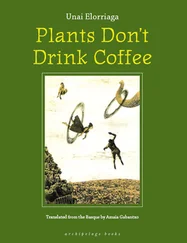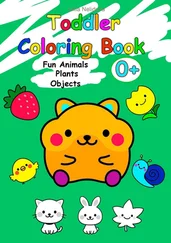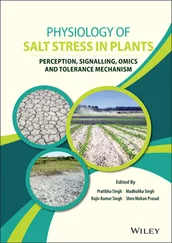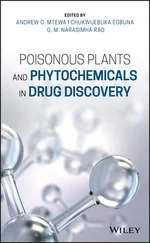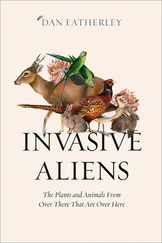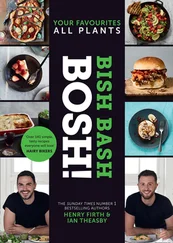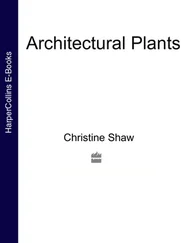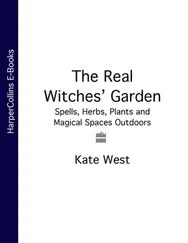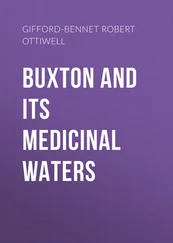1 Abat, J.K., Sanjay Kumar, S., and Mohanty, A. (2017). Ethnomedicinal, phytochemical and ethnopharmacological aspects of four medicinal plants of Malvaceae used in Indian traditional medicines: a review. Medicines 4: E75.
2 Algesaboopathi, C. (1994). Medico – botanical survey of plans in Kanjamalai hills of Salem, Tamil Nadu. Anc. Sci. Life 1: 112–116.
3 Ali, S.T., Mahmooduzzafar-Abdin, M.Z., and Iqbal, M. (2008). Ontogenetic changes in foliar features and psoralen content of Psoralea corylifolia Linn. exposed to SO2 stress. J. Environ. Biol. 29: 661–668.
4 Ali, B., Ibrahim, M., Hussain, I. et al. (2014). Pakistamide C, a new sphingolipid from Abutilon pakistanicum. Rev. Bras. Farm. 24: 277–281.
5 Badami, R.C., Deshpande, G.S., and Shanbhag, M.R. (1975). Minor seed oils, VII. Examination of seed oils by gas–liquid chromatography. J. Oil Technol. Assoc. India 7: 76–77.
6 Beha, E., Jung, A., Wiesner, J. et al. (2004). Antimalarial activity of extracts of Abutilon grandiflorum G. Don – a traditional Tanzanian medicinal plant. Phytother. Res. 18: 236–240.
7 Behenna, D.C., Stockdill, J.L., and Stoltz, B.M. (2008). The biology and chemistry of the zoanthamine alkaloids. Angew. Chem. Int. Ed. 47: 2365–2386.
8 Berli, F.J., Moreno, D., Piccolo, P. et al. (2010). Abscisic acid is involved in the response of grape (Vitis vinifera L.) cv. Malbec leaf tissues to ultraviolet-B radiation by enhancing ultraviolet-absorbing compounds, antioxidant enzymes and membrane sterols. Plant Cell Environ. 33: 1–10.
9 Bhattacharya, A., Sood, P., and Citovsky, V. (2010). The roles of plant phenolics in defence and communication during Agrobacterium and Rhizobium infection. Mol. Plant Pathol. 11: 705–719.
10 Brooker, N., Windorski, J., and Blumi, E. (2008). Halogenated coumarin derivatives as novel seed protectants. Commun. Agric. Appl. Biol. Sci. 73: 81–89.
11 Buckle, J. (2015). Basic plant taxonomy, basic essential oil chemistry, extraction, biosynthesis, and analysis. In: Clinical Aromatherapy Essential Oils in Healthcare (ed. J. Buckle), 37–72. London: Churchill Livingstone.
12 Burak, M. and Imen, Y. (1999). Flavonoids and their antioxidant properties. Turk. Klin. Tip Bilim. Derg. 19: 296–304.
13 Castañeda-Ovando, A., Pacheco-Hernández, M.L., Páez-Hernández, M.E. et al. (2009). Chemical studies of anthocyanins: a review. Food Chem. 113: 859–871.
14 Chandrashekhar, V.M., Nagappa, A.N., Channesh, T.S. et al. (2004). Anti-diarrhoeal activity of Abutilon indicum Linn. leaf extracts. J. Nat. Remedies 4: 12–16.
15 Chopra, R.N., Chopra, I.C., Handa, K.L., and Kapoor, L.D. (1958). Indigenous Drugs of India. Calcutta: Dhur UN and Sons Pvt Ltd.
16 Croteau, R., Kutchan, T.M., and Lewis, N.G. (2000). Natural products (secondary metabolites). In: Biochemistry and Molecular Biology of Plants (eds. B.B. Buchanan, W. Gruissem and R.L. Jones), 1250–1318. Courier Companies Inc.
17 Davis, E.M. (2010). Advances in the enzymology of monoterpene cyclization reactions. In: Comprehensive Natural Products II: Chemistry and Biology (eds. H.-W. Liu and L. Mander), 585–608. Elsevier Science.
18 Demie, G., Negash, M., and Awas, T. (2018). Ethnobotanical study of medicinal plants used by indigenous people in and around Dirre Sheikh Hussein heritage site of South-eastern Ethiopia. J. Ethnopharmacol. 220: 87–93.
19 Dinesh, V., Kashinath Bembrekar, S., and Sharma, P.P. (2013). Herbal remedies used in the treatment of scorpion sting from the Nizamabad District, Andhra Pradesh, India. Sci. Res. Rep. 3: 2249–7846.
20 Edupuganti, S., Gajula1, R.G., Kagitha, C.S., and Kazmi, N. (2015). Antimicrobial activity of Abutilon indicum. World J. Pharm. Pharm. Sci. 4: 946–949.
21 Gaind, K. and Chopra, K. (1976). Phytochemical investigation of Abutilon indicum. Planta Med. 30: 174–185.
22 Georgiev, M.I., Weber, J., and Maciuk, A. (2009). Bioprocessing of plant cell cultures for mass production of targeted compounds. Appl. Microbiol. Biotechnol. 83: 809–823.
23 Giday, M., Asfaw, Z., Thomas, E., and Woldu, Z. (2003). An ethnobotanical study of medicinal plants used by the Zay people in Ethiopia. J. Ethnopharmacol. 85: 43–52.
24 Glencross, B. (2016). Understanding the nutritional and biological constraints of ingredients to optimize their application in aquaculture feeds. In: Aquafeed Formulation (ed. S.F. Nates), 33–73. London: Academic Press.
25 Golwala, D.K., Patel, L.D., Vaidya, S.K. et al. (2010). Anticonvulsant activity of Abutilon indicum leaf. Int. J. Pharm. Pharm. Sci. 2: 66–71.
26 Harborne, J.B. (1982). Introduction to Ecological Biochemistry, 2e. London: Academic Press.
27 Hussain, M.S., Fareed, S., Ali, M., and Rahman, M.A. (2012). Validation of the method for the simultaneous estimation of bioactive marker gallic acid and quercetin in Abutilon indicum by HPTLC. Asian Pac. J. Trop. Dis. 2: S76–S83.
28 Hussain, G., Rasul, A., Anwar, H. et al. (2018). Role of plant derived alkaloids and their mechanism in neurodegenerative disorders. Int. J. Biol. Sci. 14: 341–357.
29 Jayaweera, D.M.A. (2006). Medicinal Plants (Indigenous and Exotic) Used in Ceylon. Colombo, Sri Lanka: The National Science Foundation.
30 Kaladhar, D.S.V.G.K., Swathi Saranya, K., Vadlapudi, V., and Yarla, N.S. (2014). Evaluation of anti-inflammatory and anti-proliferative activity of Abutilon indicum L. plant ethanolic leaf extract on lung cancer cell line A549 for system network studies. J. Cancer Sci. Ther. 6.
31 Khan, R.S., Senthi, M., Rao, P.C. et al. (2015). Cytotoxic constituents of Abutilon indicum leaves against U87MG human glioblastoma cells. Nat. Prod. Res. 29: 1069–1073.
32 Khare, C.P. (2010). Medicinal and Aromatic Plants. New Delhi: CBS Publishers and Distributors.
33 Kirakosyan, A. and Kaufman, P. (2002). New strategies to produce high-value secondary plant metabolites from shoot cultures involving a sustainable photobioreactor system. In: Natural Products in the New Millennium: Prospects and Industrial Application (eds. A.P. Rauter, F.B. Palma, J. Justino, et al.), 375–388. Springer.
34 Kuo, P.-C., Yang, M.-L., Wu, P.-L. et al. (2008). Chemical constituents from Abutilon indicum. J. Asian Nat. Prod. Res. 10: 689–693.
35 Lee, Y.K., Yuk, D.Y., Lee, J.W. et al. (2009). (−)-Epigallocatechin-3-gallate prevents lipopolysaccharide-induced elevation of β-amyloid generation and memory deficiency. Brain Res. 1250: 164–174.
36 Lin, D.R., Hu, L.J., You, H. et al. (2010). Initial screening studies on potential of high phenolic-linked plantclonal systems for nitrate removal in cold latitudes. J. Soils Sediments 10: 923–932.
37 Lin, D., Xiao, M., Zhao, J. et al. (2016). An overview of plant phenolic compounds and their importance in human nutrition and management of type 2 diabetes. Molecules 21, pii: E1374.
38 Liu, X., Yang, C., Chen, M. et al. (2010). Promoting scopolamine accumulation in transgenic plants of Atropa belladonna generated from hairy roots with over expression of pmt and h6h gene. J. Med. Plant Res. 4: 1708–1713.
39 Ludwiczuk, A., Skalicka-Woźniak, K., and Georgiev, M.I. (2017). Terpenoids. In: Pharmacognosy Fundamentals, Applications and Strategies (eds. S. Badal and R. Delgoda), 233–266. London: Academic Press.
40 Macabeo, A.P.G. and Lee, C.A. (2014). Sterols and triterpenes from the non-polar antitubercular fraction of Abutilon indicum. Pharmacogn. J. 6: 49–52.
41 Malgi, R.A., Hullatti, K.K., Kuppast, I.J., and Singh, S.K. (2009). Antiulcer activity of Abutilon indicum (L.), sweet, leaf extract using different experimental models. Int. J. Chem. Sci. 7: 1011–1018.
42 Mohapatra, S.P. and Sahoo, H.P. (2008). An ethno-medico-botanical study of Bolangir, Orissa, India: native plant remedies against gynaecological diseases. Ethnobot. Leafl. 12: 846–850.
Читать дальше

